The results of the TPLAB project were presented at a closing conference on December 9 by the participating partners: the Institute of Spatial Planning (IPP) and the Slovak University of Technology (STU) in Bratislava, as well as West-Pannon Nonprofit Ltd. and Lechner Knowledge Center. Within the framework of the project supported by Interreg V-A Slovak-Hungarian Cooperation Programme, a three-language spatial data and information platform was created for the wider area of Szigetköz (Malý Žitný ostrov) and Žitný ostrov (Csallóköz), and two Living Labs, local service offices started operating in Győr and Bratislava.
On December 9 2021, the TPLAB (Territorial Planning Laboratory) project, which started in October 2020 with the cooperation of two Hungarian and Slovak institutions dealing with spatial planning and information services, held its closing conference. Within the framework of the project supported by the Interreg V-A Slovak-Hungarian Cooperation Programme, a GIS data and information platform was created in Hungarian, Slovak and English. Its operation is also supported by local service offices in Győr and Bratislava.
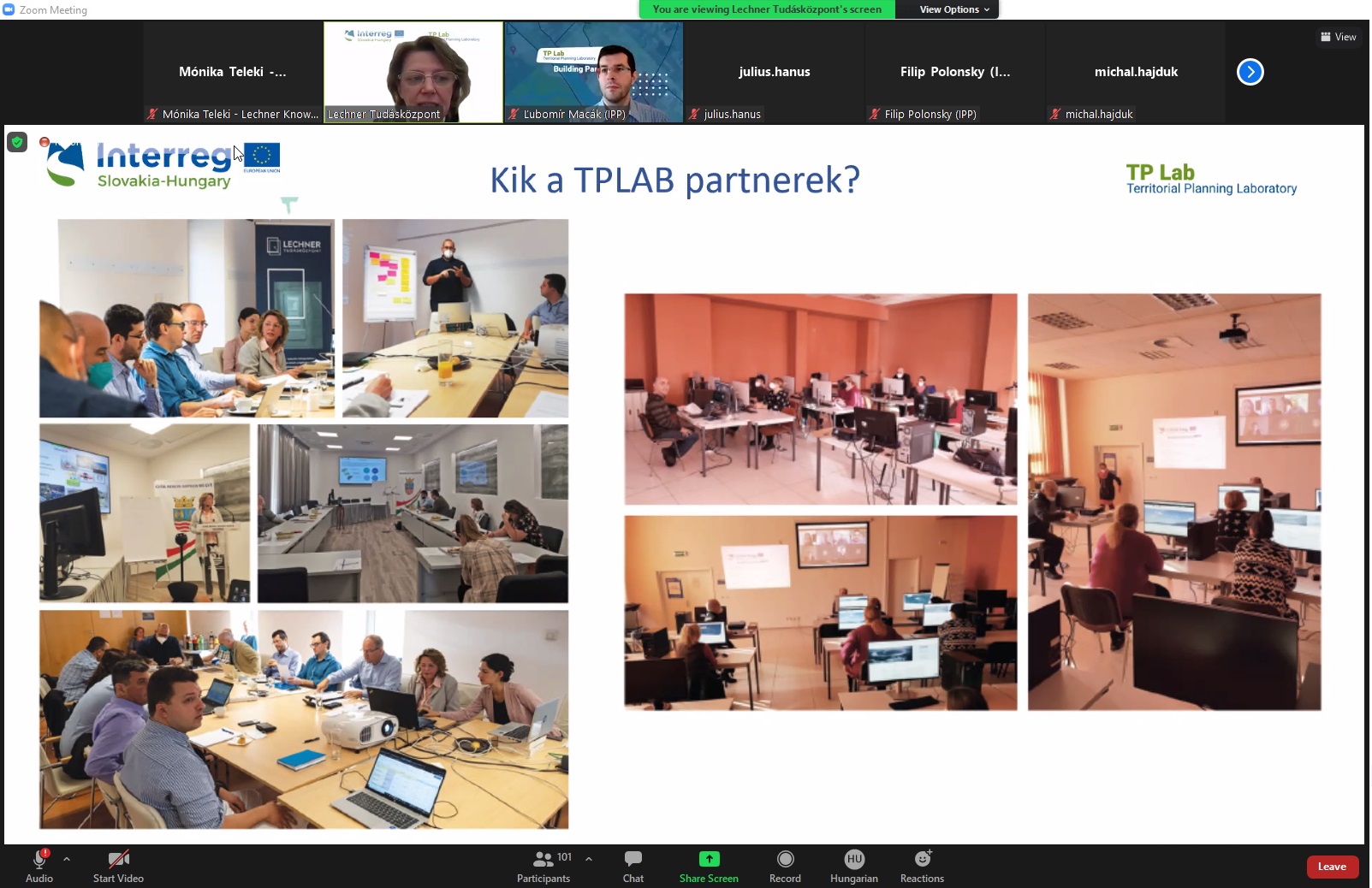
Due to the pandemic, the partners participating in the project: the Institute of Spatial Planning (IPP) and the Slovak University of Technology (STU) in Bratislava, as well as West-Pannon Nonprofit Ltd. and Lechner Knowledge Center, held the closing event online exclusively, contrary to preliminary plans. The first part of the event was public and also served as a press conference. Ľubomír Macák, who also acted as moderator of the event on behalf of the Slovak hosts, opened the conference and welcomed participants.
In the long run, we can achieve more serious development if we focus on the opportunities instead of problems and try to make use of regional capital, Maroš Finka emphasized in his greeting. The director of the SPECTRA Centre of Excellence EU at the Slovak University of Technology in Bratislava also said that the local service offices set up under the TP LAB project should be seen not only as a project result but also as a sustainable tool for territorial cohesion, to which further activities could be added.
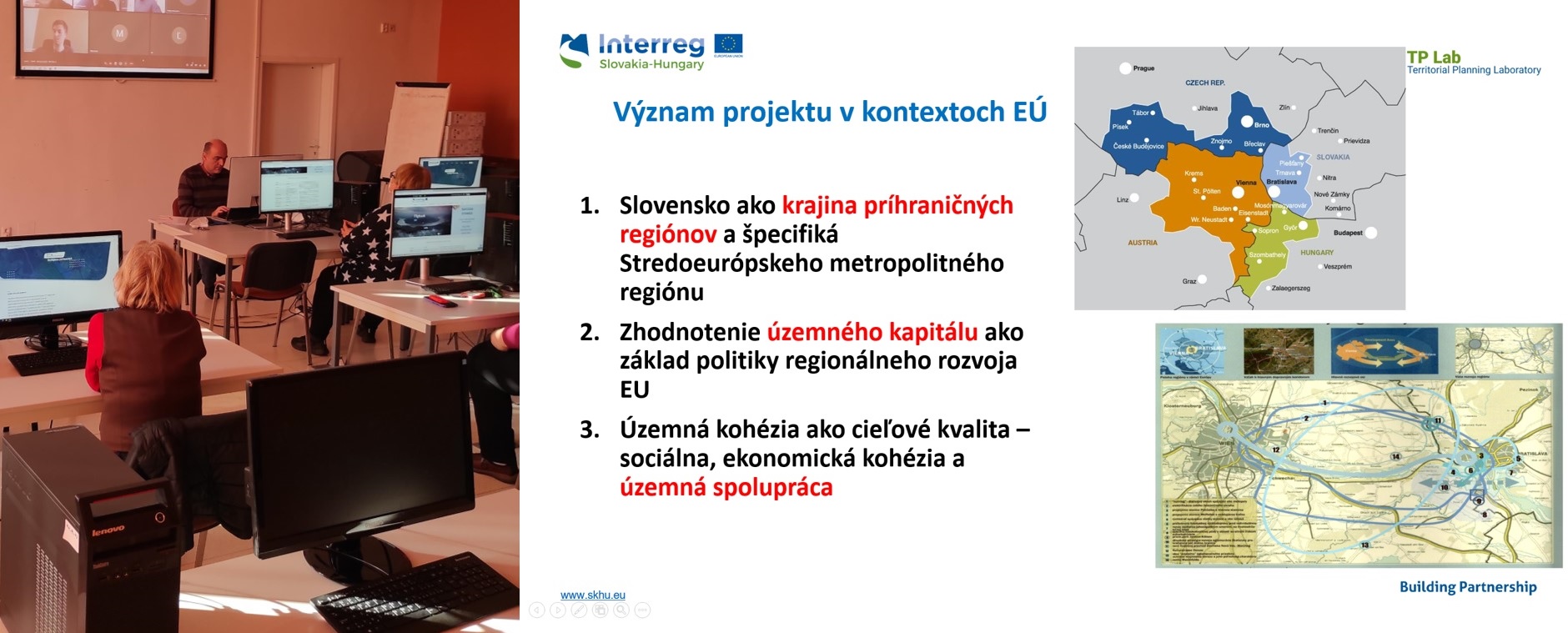
It is an important factor for the interoperability of borders to have similar legislative, decision-making and administrative mechanisms on both sides. It is essential that the data can be compared or, as nature does not know legislative boundaries, that we use the same methodologies to assess the state of the environment, said Zoltán Németh, President of the Győr-Moson-Sopron County Assembly, Member of the Monitoring Committee of the Slovak-Hungarian Interreg Programme, in his speech.
Launched as a community initiative in 1990, Interreg has become a key tool for the EU in just a few years. The Hungarian-Slovak border is the second longest border in the European Union. The border areas here cover more than 61,000 km2, which is about the size of Latvia. The population of 8,85 million is similar to that of Austria. In recent decades, this border region has undergone a dynamic opening process, and as a result social and economic relations have significantly improved, said Ildikó Tuba, program manager of the Slovak-Hungarian Interreg Programme, in the first presentation of the press conference. She also drew attention to the fact that the cooperation program for the next programming period - 2021–2027 - is currently under social consultation and can be reviewed on the Interreg website until the end of December.
Filip Polonský, GIS expert at the Institute of Spatial Planning (IPP) in Bratislava, gave examples of GIS services used in spatial planning in Slovakia, such as urban development plans, parking applications, systems for accessing hospitals or local crime distribution.
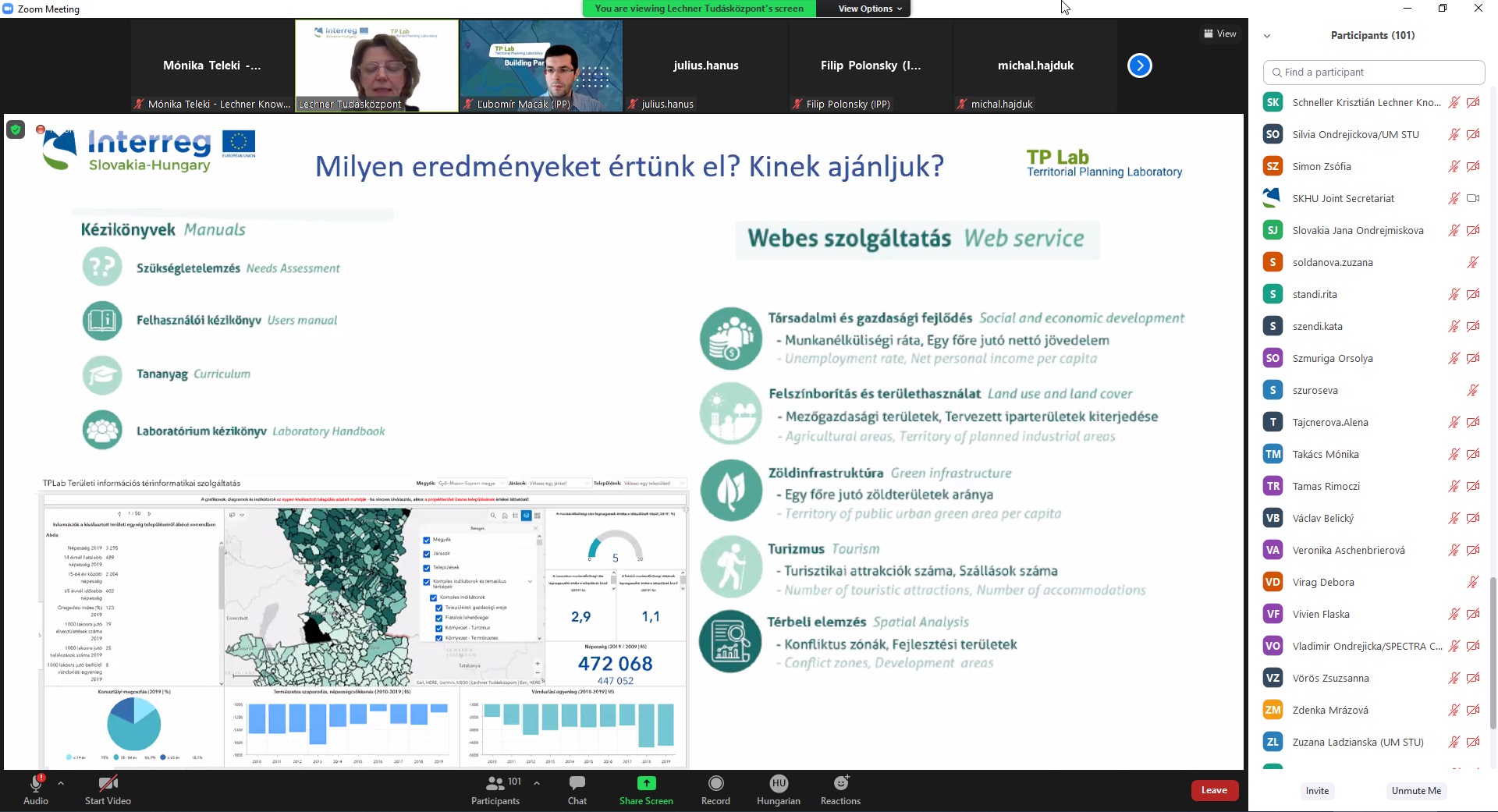
Géza Juhász, head of the General Department of Planning and Spatial Data Services at Lechner Knowledge Center, professional project manager of TP LAB, presented the most relevant IT applications to the topic out of dozens operated by the Knowledge Center. The TP LAB project and its results were presented by Mariann Major Vén, project manager and senior spatial planner. She stated that a great deal of effort was put in the work so as to not create mirror projects on both sides of the border, but to set up a new, common service. The cooperation between the partners was very harmonious, thanks to the good preparation. The project shows significant results in the sustainable utilization of natural resources, the promotion of harmonious territorial development, the creation of a liveable urban environment and the coordination of development target areas.

The application is recommended by the TPLAB partnership to decision-makers, representatives of local governments, university lecturers and students dealing with spatial planning and GIS, non-governmental organizations dealing with the protection of environmental values, investors looking for a development area, and spatial planners and specialists in spatial planning and decision-support.
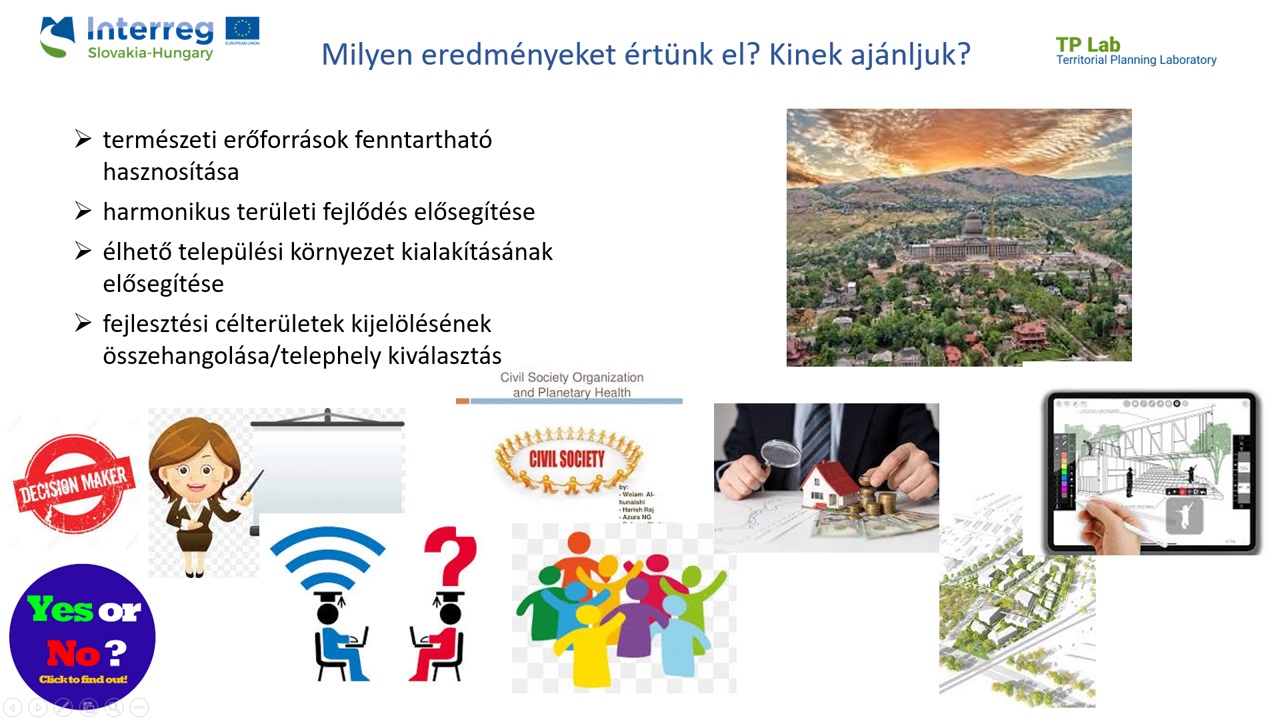
The GIS infrastructure of the TP LAB project is developed by Lechner Knowledge Center, and the indicators and data are maintained in cooperation with the Institute of Spatial Planning (IPP) in Bratislava, said Dénes Móricz, GIS expert at Lechner Knowledge Center, in his presentation. A very useful and spectacular system has been created, and it will be facilitated by the two local service offices called Living Lab – said Tibor Polgár, the director of West-Pannon Nonprofit Ltd. The main function of the “living laboratory” in Győr is to provide advice and information. The two labs keep in touch, support each other in partner search and problem solving, and anyone can use their services. The main function of the Living Lab in Bratislava, is education and knowledge sharing. The living lab in Bratislava was presented by Milan Husár, Director of TP Living Lab, CCIBIS Platform, SPECTRA Center of Excellenc EU at the Slovak University of Technology in Bratislava.
The project ends on January 31, 2022. Partner institutions running Living Labs are waiting for those interested to test the application and use it on-demand online or on-site, which is also aided by organized trainings.
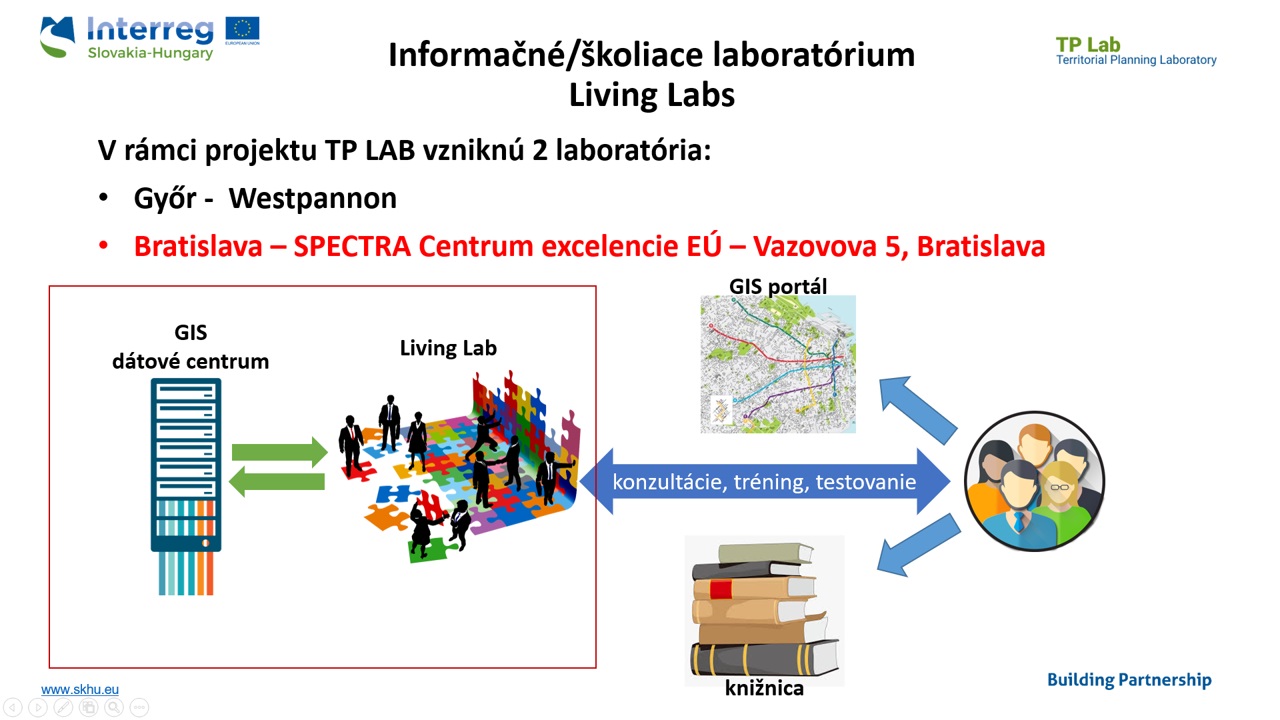
Contact information and project results are available on TP LAB’s trilingual website.
